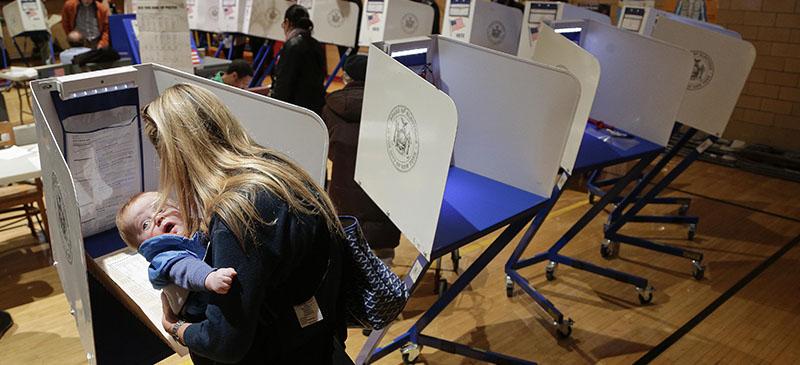Much has been resting on the shoulders of young female voters in this year’s midterm election. The coveted female vote has been a hot button topic leading up to the election today with their vote determining who will control the Senate.
According to a New York Times article, half of all adult women over 18 are unmarried. That’s 56 million unmarried women in the United States that now, according to the article, account for one in four voters.
In order to keep control over the Senate, Democrats have relied heavily on that unmarried female vote, a vote that might not actually show up at the polls today. But what’s keeping these women from the polls?
“I think most college students, and a lot of other people don’t have any views on politics and that’s the problem,” said sophomore Patricia Murray.
Voting trends suggest younger voters tend to vote during presidential elections and skip the midterm elections. Hillary Clinton even acknowledged that the midterm elections seem less “glamorous” than presidential elections.
Murray has developed the mentality that you are either a part of the problem or a part of the solution.
“Our country is not perfect, but sleeping in an extra hour on Tuesday and not going to the polls won’t make it any better,” Murray said.
Glamour suggests single women tend to lean more on the liberal side than married women, and desire more financial security. According to the magazine, they’re more likely to vote for candidates who focus on social issues like reproductive rights and affordable education.
A September article from TIME claimed female voters are motivated to head to the polls and when they “feel women’s access to birth control and abortion are threatened, and if women and families’ economic security is imperiled.”
Based off early analysis from FiveThirtyEight, Republicans are favored to win the Senate, and their chances of doing so are at 76 percent.
What prevented female voters, or young voters in general from making it out to the polls? Various theories proposed by an article by International Business Times included Millennials being overlooked in campaigns, they don’t know how to register, or they don’t care enough.
Senior DePaul student Jeanine Moon suggests in her case, there was a disconnect with attending school in Illinois rather than her home state that prevented her from participating in absentee voting.
“I don’t do much social media or Internet, but it’s all about Chicago news,” Moon said. “I didn’t know which Georgia candidate to vote for.”
According to the Illinois State Board of Elections, more than 500,000 voters cast their ballot early in Illinois, a huge increase from 2010 when 382,847 voted early. But despite those numbers, Democrats and Republicans alike were pulling for more day-of votes from supporters.
Abdel Salam Zaidan, a senior at DePaul, arrived at the polls early this morning, and experienced a much older demographic than college-aged students.
“I think the average age was about 86. It tended to be old, senior citizen couples walking in together holding hands,” said Zaidan. “The closest in age I saw was maybe a 38-year-old man who looked like he was a political junkie more than anything.”
In 2010, Democrats lost women and subsequently lost the Senate and six seats in the House and with a greater number of young voters preferring a Republican-controlled Congress according to a Harvard poll, it looks like the prediction by FiveThirtyEight of Republicans having a 3 in 4 chance of winning the Senate, is where this midterm election is heading.
Tomorrow will be a day to evaluate just how many young voters turned out to vote in the midterms, particularly young female voters who’s vote or lack there of, will impact the race for the Senate.
Although young voters might not feel like the midterm issues impact them, voters like Murray say national issues have a root right here in Chicago.
“I once had a teacher say ‘The president does not decide who picks up your trash everyday or figure out how people are going to get to work.’ That’s why local politics matters.”


